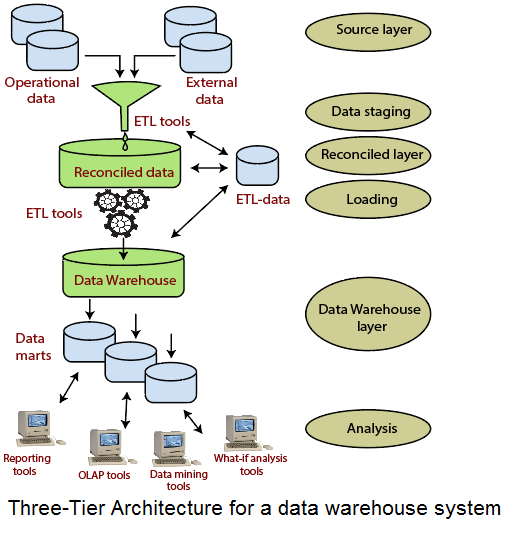Data Warehouses usually have a three-level (tier) architecture that includes:
- Bottom Tier (Data Warehouse Server)
- Middle Tier (OLAP Server)
- Top Tier (Front end Tools).
A bottom-tier that consists of the Data Warehouse server, which is almost always an RDBMS. It may include several specialized data marts and a metadata repository.
Data from operational databases and external sources (such as user profile data provided by external consultants) are extracted using application program interfaces called a gateway. A gateway is provided by the underlying DBMS and allows customer programs to generate SQL code to be executed at a server.
Examples of gateways contain ODBC (Open Database Connection) and OLE-DB (Open-Linking and Embedding for Databases), by Microsoft, and JDBC (Java Database Connection).

A middle-tier which consists of an OLAP server for fast querying of the data warehouse.
The OLAP server is implemented using either
(1) A Relational OLAP (ROLAP) model, i.e., an extended relational DBMS that maps functions on multidimensional data to standard relational operations.
(2) A Multidimensional OLAP (MOLAP) model, i.e., a particular purpose server that directly implements multidimensional information and operations.
A top-tier that contains front-end tools for displaying results provided by OLAP, as well as additional tools for data mining of the OLAP-generated data.